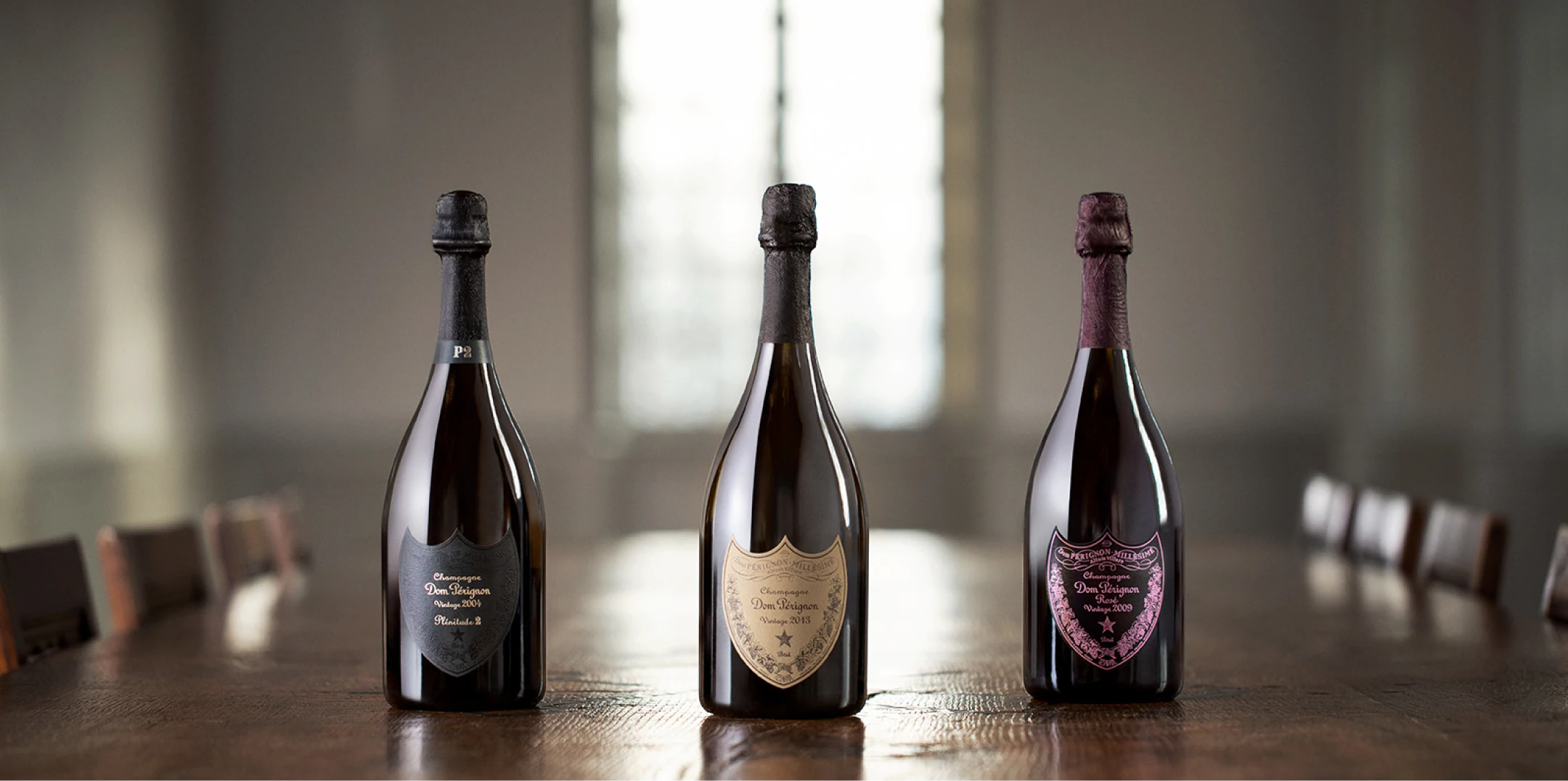Dom Pérignon is not just a name; it is a symbol of luxury, elegance, and the artistry of winemaking. Renowned for its exceptional quality, distinctive flavor profile, and prestigious history, Dom Pérignon stands as one of the most celebrated Champagne brands in the world. This article delves into the history, production process, tasting notes, and the significance of Dom Pérignon in the realm of fine wines.
A Brief History of Dom Pérignon
Origins
Dom Pérignon is named after a Benedictine monk, Dom Pierre Pérignon, who lived in the Champagne region of France during the late 17th century. Born in 1638, Pérignon became the cellar master at the Abbey of Hautvillers. His pioneering work in viticulture and winemaking practices laid the foundation for the development of Champagne as we know it today.
Innovations
Dom Pérignon was not the inventor of Champagne, but he significantly contributed to its production. He is credited with several innovations, including:
- Blending: Dom Pérignon championed the blending of different grape varieties to create a harmonious wine, ensuring a consistent quality year after year.
- Bottle Fermentation: His work on the secondary fermentation process in the bottle helped in creating the sparkling effect that Champagne is famous for.
- Quality Control: Pérignon emphasized the importance of selecting the best grapes and managing vineyard practices to enhance the quality of the wine.
Despite his significant contributions, it wasn’t until the late 19th century that the Champagne house of Moët & Chandon began producing Dom Pérignon as a distinct label.
The Production of Dom Pérignon
Vineyard Selection
Dom Pérignon sources grapes exclusively from the finest vineyards in the Champagne region, primarily from the Montagne de Reims and the Côte des Blancs. The grapes used in Dom Pérignon are a blend of Chardonnay and Pinot Noir, selected from the best crus (growth areas) within these regions. The vineyard’s location, soil composition, and climate all contribute to the grapes’ unique characteristics.
Harvesting
Grapes for Dom Pérignon are hand-harvested to ensure only the highest quality fruit is selected. The timing of the harvest is crucial, as it directly influences the wine’s flavor and acidity. The goal is to pick the grapes at their peak ripeness, which typically occurs in late September.
Vinification
- Pressing: The grapes are gently pressed to extract the juice. The first pressing, known as “cuvée,” is used for Dom Pérignon, while subsequent pressings yield lesser-quality juice used for other wines.
- Fermentation: The juice undergoes primary fermentation in stainless steel tanks, where natural yeast converts the sugars into alcohol. This process is closely monitored to maintain the wine’s delicate balance.
- Blending: After fermentation, the winemaker carefully blends different batches of wine to create the desired flavor profile. This step is critical in defining the character of Dom Pérignon.
- Secondary Fermentation: The blended wine is bottled with a small amount of sugar and yeast, initiating a secondary fermentation in the bottle. This process creates the signature bubbles and contributes to the wine’s complexity.
- Aging: Dom Pérignon is aged on its lees (the dead yeast cells) for a minimum of eight years, allowing the wine to develop its rich flavors and creamy texture. This extended aging is one of the hallmarks of Dom Pérignon.
- Disgorgement: After aging, the bottles are gradually tilted and rotated to collect the sediment in the neck of the bottle. The neck is then frozen, and the frozen plug of sediment is removed. This process is known as disgorgement.
- Dosage: A small amount of dosage (a mixture of wine and sugar) is added to balance the wine’s acidity and enhance its flavor. The amount of dosage can vary depending on the style desired by the winemaker.
- Corking: Finally, the bottle is sealed with a cork, and the wine is ready for distribution.
Tasting Dom Pérignon
Appearance
Dom Pérignon typically has a pale golden hue with fine, persistent bubbles that rise elegantly to the surface. The color and effervescence are indicators of the wine’s quality.
Aroma
On the nose, Dom Pérignon presents a complex bouquet of aromas, often featuring:
- Citrus Fruits: Lemon and grapefruit notes contribute to the wine’s freshness.
- Stone Fruits: Peaches and apricots add a touch of sweetness.
- Floral Notes: Hints of white flowers and honeysuckle enhance the wine’s aromatic profile.
- Yeasty and Toasty Notes: The aging process imparts subtle brioche, almond, and hazelnut aromas, showcasing the wine’s complexity.
Palate
The palate of Dom Pérignon is characterized by a harmonious balance of flavors and textures:
- Fruits: Citrus and stone fruit flavors dominate the initial taste, providing brightness and vibrancy.
- Minerality: A mineral quality adds depth and structure, reflecting the terroir of the Champagne region.
- Creaminess: The wine’s texture is creamy and smooth, thanks to its aging on lees, which contributes to a luxurious mouthfeel.
- Finish: Dom Pérignon concludes with a long, elegant finish, leaving a lingering impression of fruit, toast, and minerality.
Vintage vs. Non-Vintage
Dom Pérignon is produced exclusively as a vintage Champagne, meaning it is made from grapes harvested in a single year. Each vintage reflects the unique characteristics of that year’s growing conditions. The house releases vintages only when the quality meets its high standards.
This commitment to quality ensures that each release of Dom Pérignon is exceptional and worthy of its prestigious reputation. The vintages are known for their aging potential, often improving in flavor and complexity over time.
The Cultural Significance of Dom Pérignon
A Symbol of Luxury
Dom Pérignon has long been associated with luxury and celebration. It is often served at high-profile events, from royal weddings to prestigious award ceremonies. Its reputation for excellence makes it a sought-after choice for special occasions, embodying the idea of indulgence and sophistication.
Iconic Partnerships
The brand has formed partnerships with various cultural icons and artists, further solidifying its place in the world of luxury. Collaborations with designers, filmmakers, and musicians have resulted in unique limited-edition bottles and promotional campaigns that highlight the brand’s artistic spirit.
The Art of Pairing
Dom Pérignon is versatile when it comes to food pairings. Its complexity and acidity make it an excellent companion for various dishes, including:
- Seafood: Oysters, scallops, and lobster pair beautifully with the wine’s crisp acidity and mineral notes.
- Poultry: Roasted chicken or duck enhances the wine’s fruitiness and creamy texture.
- Cheese: Soft cheeses like Brie or Camembert complement the wine’s elegance.
- Desserts: Fruit-based desserts or pastries with cream provide a delightful contrast to the wine’s acidity.
Collecting Dom Pérignon
For many wine enthusiasts and collectors, Dom Pérignon represents a valuable addition to their collections. Its reputation, quality, and aging potential make it a wise investment.
Storage
Proper storage is crucial for preserving the quality of Dom Pérignon. Here are some tips for storing Champagne:
- Temperature: Store bottles in a cool, dark place, ideally between 45-65°F (7-18°C).
- Humidity: Aim for a humidity level of around 70% to keep corks moist and prevent oxidation.
- Position: Store bottles horizontally to keep the cork in contact with the wine, preventing it from drying out.
Aging Potential
Dom Pérignon is known for its aging potential. While it can be enjoyed upon release, many vintages improve with time, developing more complexity and depth. Depending on the vintage, bottles can be cellared for several years or even decades.
Investing in Dom Pérignon
Collectors often seek out rare vintages or limited releases of Dom Pérignon, which can appreciate significantly in value over time. Researching market trends and consulting with wine experts can help guide investment decisions.
Conclusion
Dom Pérignon is more than just a Champagne; it is a testament to the art of winemaking and a symbol of luxury and celebration. Its rich history, meticulous production process, and exceptional tasting profile make it a beloved choice for connoisseurs and casual drinkers alike. Whether enjoyed on a special occasion or savored in the comfort of home, Dom Pérignon embodies the essence of elegance and sophistication in every sip. As you explore the world of Champagne, let Dom Pérignon be your guide to the finer things in life.



